 |
|
| Issue #91 • January/February, 2005 |
So, editor Dave Duffy and I got to talking about guns. We agreed that for some people they are sporting equipment like a Spaulding racquet or a Big Bertha golf club, and for others they are objets d’art like Patek-Phillipe wristwatches or Waterford crystal. For most of us, though, they are tools.
|
And, very definitely, power tools. Remote control drills, with the width and depth of the hole adjusted by the choice of bore size and ammunition. Tools of survival, in many ways.
Countless working ranchers have used guns to save their lives from stock animals gone rogue. The legendary Elmer Keith was an early 20th century cattleman when a bronc went wild, and Keith would have been dragged to death with his foot caught in the stirrup if he hadn’t been able to unholster the single action Colt revolver he carried and fire upward, killing the animal and saving his life. On another day, a fast draw with his ranch revolver saved him from being bitten by a rattlesnake.
More commonly, the “survival” element involves food. The high powered rifle in the pickup, the .22 or shotgun on the tractor, or that holstered handgun can turn a random sighting of a meat animal on the property into food on the table. It can also eradicate the fox that raids the henhouse, the coyote that has been stalking the family cats, or the wolf that is licking its chops for the newly-birthed lamb. Not to mention keeping the bounty of the produce garden for the family’s bellies instead of those of the varmints.
|
There is also the protection factor. An Alaskan backwoodsman, about to be mauled by a huge brown bear, kills it with his Ruger .357 Magnum revolver. Fishing in the same state, a sportsman and his partner are attacked by a great bruin. The shaken partner fumbles and drops his slug-loaded 12 gauge shotgun in the water, but the first man empties a 16 shot Taurus 9mm semiautomatic pistol into the huge ursine head, killing the beast and saving two human lives. In the lower 48, a game ranger’s Smith & Wesson .357 kills a mountain lion poised to spring on him, and a young boy’s .22 rifle stops a maddened dog from ripping his baby sister apart. Camping in the wilderness, a man is set upon by a gang of thugs who must have thought “Deliverance” was a training film. But, the camper has a Ruger Mini-14 .223 caliber semiautomatic rifle with him, and this leads to an acceptable outcome.
There are different tools for different jobs. Durability is an important factor in selection, of course, but so is power level. So is portability. And so is ease of use, in the hands of every dweller in that particular backwoods home who may need to use that particular tool.
Shotguns
|
The smoothbore musket was the weapon of the Pilgrims, and the “blunderbuss” remains an icon of Thanksgiving imagery as a result. Historians tell us that when the wagon trains bore the pioneers westward in the 19th Century, each Conestoga wagon was more likely to bear a “scattergun” than a rifle. The shotgun has the longest and richest history of any American firearm, and it remains a cornerstone of the backwoods home gun rack. In many farm households, the shotgun is the only firearm the family finds necessary.
Supremely versatile, the shotgun can fire birdshot to capture the fowl of the air and rabbits and squirrels, or single-projectile slug loads for the beasts of the field, accurate enough to slay the deer and powerful enough to kill the marauding bear. The 20-gauge is ample for most needs, but the more powerful 12-gauge is more versatile, and is by far the most popular choice among farmers and homesteaders. The shotgun is a useful tool in all its forms, but the two most commonly seen as heavy-duty working guns are the single-barrel and the slide-action.
|
The single-shot break open shotgun is cheap and easy to manufacture in a sturdy and functional form. The Harrington & Richardson seems to be the most popular brand, one rich in history as a workingman’s gun, but there are many others on the market, all very affordable. Very safe to handle in that it can be kept unloaded, then quickly “broken” open and a shell inserted into its barrel, the “single” demands careful one-shot, one-kill discipline since it will take so long to reload a follow-up round if the first shotgun blast does not accomplish the necessary task.
The slide-action repeater, with several shells in the tubular magazine beneath its barrel, is more forgiving of error in aim, and altogether more practical when
|
there might be multiple targets or one determined creature which must be shot multiple times. The most affordable of the sophisticated shotguns, this “pump gun” is also the most rugged and the least demanding of maintenance, and hence particularly well suited to the rough working “life” of a tool on a farm or a ranch. Now that I’m finally living in the boonies instead of just working there, the gun I keep behind my front seat is a Remington Model 870 12-gauge pump, with short, handy 20-inch barrel and folding stock. This makes it extremely short overall, easy to discreetly cover with a jacket as it lies on the floor behind the driver’s seat, and therefore easy to grab and exit with from the driver’s door. It’s a moment’s work to flip the stock open, simultaneously pumping a shell into the chamber, and bring it to the shoulder to aim with Remington’s optional rifle type sights. Loaded with Federal full power one-ounce rifled slugs, it has crushing power at close range, and the accuracy of a Kalashnikov battle rifle out to 100 yards, a perfect range of versatility for my particular needs.
Rifles
I would venture to guess that the humble .22 is the most popular of backwoods home rifles. It’s the right size for the varmints who plague the vegetable garden, and the right size for stewpot rabbits and squirrels.
|
When butchering livestock, it’s powerful enough to slaughter instantly and humanely with a brain shot placed with surgical precision at very close range. Trappers like .22s for humanely euthanizing captured animals, because they make only a tiny hole in the pelt. The ammunition is cheap, the sound of the shot is soft, and recoil is nonexistent, all of which encourage shooting practice, which is a helluva lot of fun and hugely practical when you live in the boondocks.
The typical .22 farm rifle may be an old Mossberg, a fine vintage Remington or Winchester, the ubiquitous Marlin, or the hugely popular modern Ruger 10/22, or any of several others. It may be bolt action or lever action, slide action or semiautomatic. It will, however, be too light in power to handle large creatures efficiently, particularly under the widely varying conditions of the real world, which can make accurate shot placement difficult.
|
In the larger caliber guns, the .30/30 is probably the most popular every-day “working rifle” of the hinterlands, and has been so since its introduction in the late 19th century. Flat in silhouette and usually weighing under seven pounds, your classic .30/30s, like the Winchester Model 94 and the Marlin Model 336, are easy to carry and easy to scabbard alongside your horse, your ATV, your tractor, or even your snowmobile. Millions of both have been produced. Their “cowboy style” lever action design allows efficiently fast shooting, and is evocative of a classic time in rural American history.
Often overlooked but uniquely suitable for use as a heavy-duty farm tool is the surplus military rifle, particularly the bolt action guns of WWII and even WWI vintage. Designed to work in the mud of the trenches and the sands of Pacific islands, and to function even when there is no time to clean or lubricate them, these guns were built to be dropped and kicked around and keep on working and shooting straight. The ugly full-length wooden stocks and upper wooden handguard of the typical military rifle was there to protect its barrel.
|
Among the best are the classic Springfield (’03) and American Enfield (P-14 and P-17); among the best and most affordable are the Mauser and the British Short Magazine Lee Enfield (SMLE). The Springfield and the P-17 fire America’s most loved hunting rifle cartridge, the .30/06; the P-14 and the SMLEs are chambered for the .303 British round, still popular among Canadian hunters. The Mausers can be had in a variety of calibers, perhaps the most useful being the 7mm Mauser, aka 7X57. This load is great for deer, and with its long, narrow 175 grain soft nose hunting bullet offers enough penetration to be adequate for moose and black bear, yet its soft recoil reminds you more of a .30/30.
It used to be in vogue to “sporterize” these old guns with lighter, sleeker stocks, more modern sights, and so on. But that was in a time when a commercially made Winchester or Marlin .30/30 cost about $70, and a Winchester Model 70 maybe a C-note or a little more, but the surplus bolt guns went for $25 to $30 each in good condition. Today, you’re looking at about $250 for one of the more usefully sized surplus bolt actions, such as the Enfield Jungle Carbine or the short Spanish Mauser 7mm carbine, which is the same or a little more than a used .30/30 in the same condition. The economic advantage of the surplus rifle has been lost, though its rugged durability under the most extreme conditions remains.
|
In semiautomatics, the military style guns tend to be a bit too clumsy in the large caliber range, but that’s also true of the bolt actions. Also, any military-style semi-auto will tend to be expensive, and you have to remember that in most states, the game laws prohibit hunting with any semiautomatic rifle having a greater than five-cartridge magazine capacity. They’re also pretty expensive. For farm work as opposed to hunting, the most logical choice in terms of both economy and functionality is the SKS, in surplus or newly manufactured form. Still available for under $200 if you shop carefully, they fire the 7.62X39 mm military cartridge of the AK47. With soft nose hunting ammunition, this cartridge gives you practical ballistics that can best be described as “.30/30 Lite.”
Handguns
As with rifles, the .22 is particularly popular and particularly useful for rural home and farm handgun needs. Semiautomatic pistols like the Ruger or the old, classic, and aptly named Colt Woodsman, are popular choices. However, a revolver will give you more versatility. The auto will cycle only with conventional .22 Long Rifle ammunition. With the revolver you can use mild .22 Shorts or even lighter .22 BB and CB caps to shoot mice and pest birds in the barn without tearing up the walls and floors too badly; you can use .22 “ratshot” loads for close up, reactive shooting at snakes; and of course, you have the full range of .22 Long Rifle options. At my current backwoods digs, the handgun that gets the most use is a Smith & Wesson K-22 target revolver. On rainy days, I can sit under the porch roof and plink at a little steel Birchwood-Casey target set against the range backstop 50 yards away. The .22 will do nicely for that damn possum that tore up the neighbor’s cat, and similar chores. If you think you’re a good enough a marksman, the .22 handgun is an extremely sporting tool for hunting rabbits and squirrels.
|
The .22 is generally considered too light for defensive use against dangerous animals, whether they approach you on two legs or four. A .38 Special revolver or 9mm pistol is generally considered to be the minimum power floor for defensive handguns. Where is the handgun’s place on the working farm’s gun rack? The answer is, its place is not on the rack at all. It’s called a “sidearm” because its place is at your side. Lacking the range and easily delivered marksmanship of a shoulder gun, the handgun is “the emergency reaction tool that is always there.” My friend Clint Smith, Vietnam combat vet and ex-SWAT cop, founded the famous Thunder Ranch training school in Texas and the new School of Arms in Oregon. He’s famous for explaining, “The handgun is what you use to fight your way back to the shotgun or rifle you shouldn’t have left behind in the first place.” Words to live by, especially when you’re extremely remote from assistance from cops and game wardens.
Choice of handgun? In a semiautomatic, as with a rifle, it makes sense to pick a military design expressly created to endure the rigors of heavy duty with minimal maintenance. The Beretta 92 9mm, known as the M9/M10 in American military circles, is a good example. Much more popular, however, is the GI pistol the Beretta replaced, the 1911 .45, which is more powerful and therefore much more suitable for shooting larger creatures. The single action Frontier style revolver is the traditional weapon of the movie cowboy, and is in fact seen in abundance among today’s working cowboys, but I have to say that I’ve seen more carrying modern double action Magnum revolvers, and even more with .45 automatics in their pickup trucks or at their sides.
|
The Glock pistol should be strongly considered for this application. No semiautomatic is less demanding in terms of maintenance and lubrication. That is, they work well even if they’ve unavoidably become dirty. The Glock 21 .45 is big but light and very accurate; the Glock 30 .45 is much smaller, still very light and very accurate. For shooting large animals, though, the 10mm Glock’s greater penetration with full power ammo makes it a better choice. The big Glock 20 in this caliber was the backwoods choice of gun expert Chuck Karwan, who determined that with all 15 rounds in its pre-ban magazine and a 16th in its firing chamber, it carried more potential foot-pounds of energy on board when fully loaded than any Magnum revolver. Paco Kelly, an experienced street cop and highly accomplished handgun hunter, has had good luck in the latter pursuit with the compact, 11-shot Glock 29, which is to the larger 10mm as the Glock 30 is to the Glock 21 in .45s. If you want something a little smaller, Glock’s standard frame guns are made in compact and subcompact sizes in 9mm Luger, .40 S&W, or .357 SIG. A subcompact Glock 27 in .40 or Glock 33 in .357 will approximate the power level of a .357 Magnum revolver if you choose the right ammo, and will be the same size “package” to carry as a small frame Magnum, but with lighter weight and ten shot cartridge capacity instead of five or six. A friend of mine in the South had his Glock 27 on when an alligator approached his small rowboat; he put a .40 slug in the critter’s head, and it thrashed into a death roll and sank beneath the surface before it could reach the boat.
If wearing a gun visibly on the property is not in keeping with your family values, lifestyle, or local social conventions, you might want something smaller for all day wear with discreet concealment. A small .357 Magnum revolver is the ticket here. Rossi, Ruger, Smith & Wesson, and Taurus all produce short barrel, five shot .357s which are suitable for this application. My own choice in this category, hands down, would be the Ruger SP101 with two and a quarter inch barrel, loaded with 125 grain hollow point .357 Magnum ammo. The little Ruger snubby is as accurate at 25 yards as a much larger service revolver, and is by far the most rugged of the small frame .357s, as well as the most comfortable to shoot.
|
If concealment is not a factor, my choice for all day wear on the belt if a powerful handgun was needed would be a .44 Magnum. I’m partial to the Smith & Wesson Model 629 with four-inch barrel. We owe the concept of this particular S&W, and the .44 Mag cartridge itself, to the aforementioned Elmer Keith. The recoil is notoriously vicious, but if you’ve paid your dues in training and practice, there is no more practical high-powered handgun for all day carry, whether you’re talking dangerous game or large farm animals that turn ugly on you.
General advice
Backwoods life, whether on the farm or in the woods, can be hard. Hard on the people, hard on the clothing, and hard on the equipment. That’s why a true backwoodsman’s pants are more likely to wear the Carharrt label than Tommy Hilfiger or Gucci. It’s also why the backwoods firearm needs to be a rugged, heavy-duty design.
|
You don’t want a gun that requires constant maintenance. At the same time, you always want to take care of your tools. That goes double for tools whose mission can include emergency rescue, which is definitely the job description of backwoods household firearms. Wipe them down regularly, and lubricate your autoloading guns monthly, even if they haven’t been fired. A semiautomatic’s parts have long bearing surfaces, and won’t work well if not lubricated. Lubricant is generally liquid: it can evaporate or drain out of the gun, irrespective of whether it is actually fired.
Firearms are the ultimate durable consumer goods. Many people get pleasure from hunting and shooting with their parents’ or grandparents’ guns. Few of us use Dad’s old clothes washer or drive Grandpa’s old car. The maintenance you give your firearms will preserve them for generations to come, who will cherish these functional heirlooms.
Don’t neglect safe storage issues. The gun wants to be where you can reach it immediately, but unauthorized persons cannot reach it and activate it at all.
It ain’t easy. It’s about being responsible. But, hey, if you weren’t into that, you wouldn’t be into backwoods living.


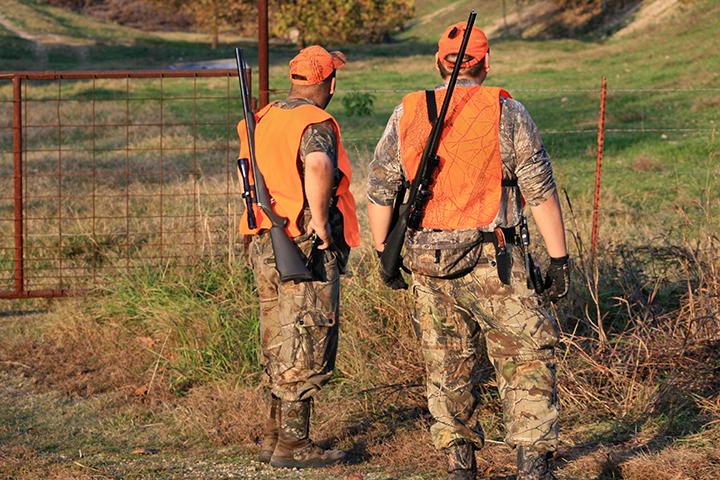














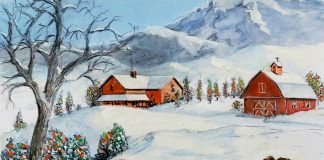




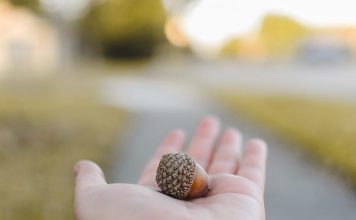
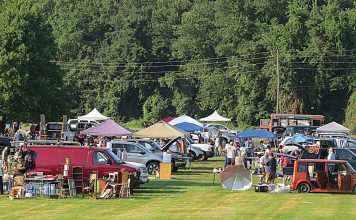

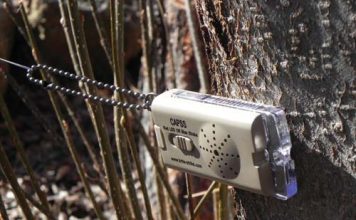


Very helpful thank you